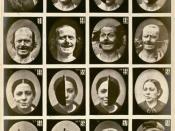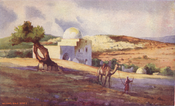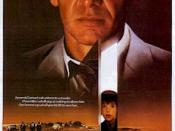Witness
Just as in paintings or drawings, the point of view of any work of art can drastically affect the way that artwork is interpreted, developed, and characterized.
The film Witness utilizes the idea of point of view through use of various camera angles and shots to convey different meanings throughout the film. In a way, the director Peter Weir used the camera as the narrator of the film, manipulating what the audience sees on the screen through those deliberate camera perspectives.
One of the more notable scenes, in which Rachel bathes Book's wounds, epitomizes the idea of the camera as the narrator in the film Witness. Lighting, music, and camera angles are utilized to convey meaning in the scene. Throughout the film, Weir uses the camera, lighting, music, and silent facial expressions and movements, often completely replacing dialogue in many of the scenes in Witness. The bathing scene is one of them, as Weir utilizes the lighting to almost halo Book's body, who has, ironically enough, been shot "as a Jesus figure pierced in the side" (The Eyes of a Child, p.117)
then moving the "halo" of light around Rachel, who is almost like a "guardian angel" (p.117) to Book, caring for him as he attempts to recover from his gunshot wound. Weir utilizes the importance of body language and unspoken communication when he closes up on Rachel's hand as she reaches to help Book through his pain.
Further use of unspoken communication is seen in close-ups, a key element for conveying inner thoughts and general meanings in Witness. Close ups used during the wound bathing scene are used mainly to capture the expressions on Rachel and Book's faces, primarily their eyes, in order to express the inner feelings of both of the characters as they...


